#history 1984-1991
Text
#académie#push me down#odile arias#thierry martinez#dominique arias#new wave#synthpop#french pop#1985#vienna#history 1984-1991#2014
0 notes
Text
Punk History Resources: Vol. 1
This is a compilation of resources found and recommended by various alternative bloggers, each of whom are credited for their contributions. This started because I was getting SO MANY asks about resources such as videos, books, and websites to use to learn about punk history. Admittedly, my own list isn't that long, so I thought it was best to reach out to some others and share their knowledge with everyone. So thank you again to everyone who helped out with this!!
@raggedyfink @lovintheaesthetic @punk-patches @my-chemical-ratz
YOUTUBE:
Punk/Goth Docs Playlist on Youtube (77 Videos) (raggedyfink)
1991 The Year Punk broke (lovintheaesthetic)
She's Real (Worse Than Queer) (lovintheaesthetic)
Don't Need You, The Herstory of Riot Grrrl (lovintheaesthetic)
The Long Queer History of Punk (lovintheaesthetic)
The very Black History of Punk Music (lovintheaesthetic)
Punk's Not Dead (lovintheaesthetic)
BOOKS:
Phantoms the Rise of La Deathrock (raggedyfink)
Too Tough to Love by Roxy Ramone (raggedyfink)
I Slept With Joey Ramone by Mickey Leigh (raggedyfink)
Please Kill Me, The Uncensored Oral History of Punk Rock (punk-patches & lovintheaesthetic)
Encyclopedia of Punk (punk-patches)
The Day the Country Died: A History of Anarcho-Punk, 1980-1984 (my-chemical-ratz)
The Heebie-Jeebies at CBGB's: A Secret History of Jewish Punk (my-chemical-ratz)
Sellout: The Major-Label Feeding Frenzy That Swept Punk, Emo, and Hardcore (lovintheaesthetic & my-chemical-ratz)
Tranny: Confessions of Punk Rock's Most Infamous Anarchist Sellout (my-chemical-ratz)
Punk Rock: An Oral History (my-chemical-ratz)
Girls to the Front: The True Story of the Riot Grrrl Revolution (my-chemical-ratz)
Queercore: Queer Punk Media Subculture (my-chemical-ratz)
Queercore: How to Punk a Revolution: An Oral History (my-chemical-ratz)
Spider-Punk: Banned in D.C.(this doesnt have anything to do with history but i love spider punk so) (my-chemical-ratz)
MOVIES / DOCUMENTARIES:
The Punk Singer (punk-patches)
Queercore: How to Punk a Revolution (punk-patches)
Punk's Not Dead (punk-patches)
Pansy Division: Life in a Gay Rock Band (punk-patches)
Queercore: How To Punk a Revolution (my-chemical-ratz)
Afropunk (my-chemical-ratz)
Punk in Africa (my-chemical-ratz)
A Band Called Death (my-chemical-ratz)) (link courtesy of @wrench-p, but is unavailable to watch in the US))
ARTICLES:
(some of these are found on JSTOR, but you can sign up for a free 100 articles per month)
Muslim Punk in an Alt-Right Era (my-chemical-ratz)
A History of Punk (my-chemical-ratz)
Jews, Punk and the Holocaust: From the Velvet Underground to the Ramones: The Jewish-American Story (my-chemical-ratz)
What is Punk and Why Did It Scare People So Much? (my-chemical-ratz)
An Account of a South African Punk Rock Music Collection (my-chemical-ratz)
Queer As Punk: A Guide To LGBTQIA+ Punk (my-chemical-ratz)
Did Punk Matter?: Analyzing the Practices of a Youth Subculture During the 1980s (my-chemical-ratz)
ZINES:
(some may not be *about* history, but they’re a huge part of it!)
Punk Planet archive (my-chemical-ratz & safety-pin-punk)
Queer Zine archive (I personally like the anon boy collection haha) (my-chemical-ratz)
Archive.org in general has a lot of zines :) (my-chemical-ratz)
ETC:
(These aren’t about punk history itself but could be helpful in learning about the politics that go with being punk)
A History of Punk from 1976-78: A Free Online Course from the University of Reading (safety-pin-punk)
Punk History Reading List (safety-pin-punk)
Essays about socialism (my-chemical-ratz)
Leftism 101 (my-chemical-ratz)
Rights as an American protester (my-chemical-ratz)
Social justice classes (I’m really excited to go through these!!) (my-chemical-ratz)
Stamped (my-chemical-ratz)
How To Be An Anti-Racist (my-chemical-ratz)
Nice Racism: How Progressive White People Perpetuate Racial Harm (my-chemical-ratz)
I would love to make a Vol. 2 post at some point in the future, so if you have resources and want to share, PLEASE message me!!
#punk 101#punk culture#punk history#punk#punx#punk resources#resource list#friends!!!#making this post legit made tumblr crash on my desktop soo uhhhh let me know if anything is fucked up please!
1K notes
·
View notes
Text

Jericho- Where to Read?
Joseph William Wilson (Jericho) is the youngest son of Slade Wilson (Deathstroke) and Adeline Kane. Beneath the cut is a complete list of Joey’s major appearances updated as of January 2024. Most important issues are in bold.
The 1980s:
Tales of the Teen Titans (1984) 42-44, Annual 3, 45-48, 50-52, 56-57, 58
The New Teen Titans (1984) 1-2, 3-5
Crisis on infinite Earths (1985) 3-5, 9, 11
Who’s Who: The Definitive Directory of the DC Universe (1985) 11
The New Teen Titans (1984) 6-10, Annual 1, 11-13, 14-15
The Omega Men (1983) 34-35
The New Teen Titans (1984) 16-17, 18, 22, 24-31
Action Comics (1938) 584
Teen Titans Spotlight (1986) 3-6
Secret Origins (1986) 13
History of the DC Universe (1986) 2
The New Teen Titans (1984) 33-34
Blue Beetle (1986) 11-14
The New Teen Titans (1984) 35-37, Annual 3, 39-49, Annual 4
The New Titans (1988) 50-55
Secret Origins (1986) Annual 3
The New Titans (1988) Annual 5, 57-59
Batman (1940) 440
The New Titans (1988) 60-61
Secret Origins (1986) 46
The New Titans (1988) 62-63
The 1990s:
The New Titans (1988) 64-67
Hawk & Dove (1989) 11-12
The New Titans (1988) 68-69
Who’s Who in the DC Universe (1990) 1
The New Titans (1988) Annual 6
Wonder Woman (1987) 47, 49
The New Titans (1988) 71, 75-79, Annual 7, 80-85. 86
Deathstroke the Terminator (1991) 1-7, 9, 11, Annual 1
Showcase ‘93 (1993) 2
Batman Shadow of the Bat (1992) 34
Deathstroke (1991) 48
JLA/Titans (1998) 1
Nightwing Secret Files and Origins (1999) 1
The Titans (1999) 10
The 2000s:
The Titans (1999) 25, 46
Teen Titans (2003) 2
Batman Gotham Knights (2000) 44
Teen Titans (2003) 3-5, 7-8
Avengers/JLA (2003) 4
Teen Titans (2003) 9, 11-12, 21
Nightwing (1995) 106
DC Special The Return of Donna Troy (2005) 1
Teen Titans/Outsiders Secret Files and Origins (2005) 1
Teen Titans (2003) 33, 39-47, 52
Countdown to Final Crisis (2007) 36
DC Universe: Last Will and Testament (2008) 1
DC Universe Decisions (2008) 3-4
Titans (2008) 6-12
Teen Titans (2003) Annual 1, 69
Vigilante (2008) 5
Teen Titans (2003) 70
Titans (2008) 13
Vigilante (2008) 6
Teen Titans (2003) 77-78
The 2010s:
DC Universe Legacies (2010) 5
Titans (2008) 37-38, Annual 1
Deathstroke (2011) 0, 13, 19-20
New Teen Titans: Games (2011)
Deathstroke (2014) 2-6, 17-20
Convergence New Teen Titans (2015) 1-2
Deathstroke: Rebirth (2016) 1
Deathstroke (2016) 1-3, 6-10, 12-16, 18
Teen Titans (2016) 8
Deathstroke (2016) 19
Teen Titans The Lazarus Contract Special (2017) 1
Deathstroke (2016) 20-25
DC Holiday Special (2017) 1
Deathstroke (2016) 26-27, Annual 1, 28 -32, 34-50
The 2020s:
Dark Knights: Death Metal: The Last Stories of the DC Universe (2020) 1
Batman Black and White (2020) 5
Deathstroke Inc. (2021) 1, 5, 7
Future State Gotham (2021) 12
Tales of the Titans (2023) 2
Thank you to @jerichogender for helping me compile!
170 notes
·
View notes
Text
Broadway Divas Tournament: Round 4
It's been a little too relaxed around here these last few weeks. Very few wars, very few vicious fights among Diva fans. So. We're back to where we began with Bernadette vs. Patti and now Lea Salonga in the pit. If Lea hasn't been tossed back in after losing to Christine Baranski Round One, I'm confident my beloved Kelli O'Hara would have made it to Round 4 (and then been summarily eviscerated by Bernadette). So, to avenge my darling blonde soprano (a dying breed), here she is boys, here she is world, here's Patti.


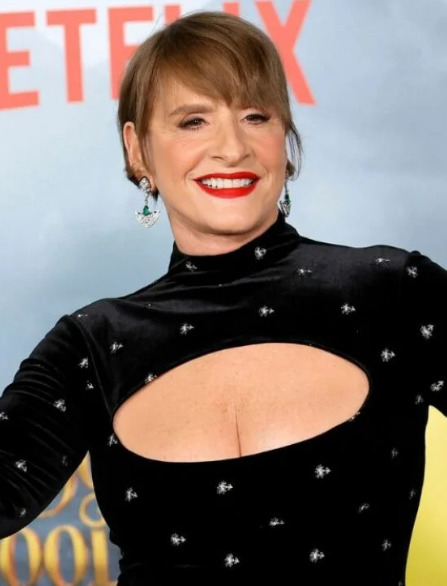
Seven-time Tony nominee, two-time winner Bernadette Peters (1948) has a sixty-plus year stage career of monumental proportions. Considered the foremost Sondheim interpreter, their collaborative works include Sunday in the Park with George (1984), Into the Woods (1987), Gypsy (2003), and Follies (2011). She has a thriving concert career, and was a co-founder of the beloved Broadway Barks event each year in Shubert Alley. She has an honorary third Tony (Isabelle Stevenson Award) for her outstanding advocacy and philanthropy.
Lea Salonga (1971) made history in 1991 as the first Asian performer to ever win Best Leading Actress in a Musical for Miss Saigon. She was just twenty years old at the time, the second youngest, and now all these years later, she qualifies for our MILF tournament. Lea has starred in six Broadway shows including Les Miserables (as first Eponine and then later Fantine), Once On This Island (2017), and most recently a brief stint in Here Lies Love (2023). She is also the singing voice for Disney's Mulan.
Eight-time Tony nominee, three-time winner Patti LuPone (1949) has a staggering fifty-plus year stage career. Award-winning roles include Eva Peron in Evita (1979), Gypsy (2008), and Company (2022). She has toured the US with her wildly successful concert and cabaret acts, and will kill you on sight if she sees a cell phone in the theatre. Patti was NOT Norma Desmond on Broadway, and because of it, is the proud owner of the ALW Memorial Pool. She is no longer a member of Actors' Equity. Despite that, she will reportedly be back on Broadway next season in a straight play.
NEW PROPAGANDA AND MEDIA UNDER CUT: ALL POLLS HERE



youtube
"Time to prove that this is the Bernadette Peters website. Let's go, lesbians, let's go."

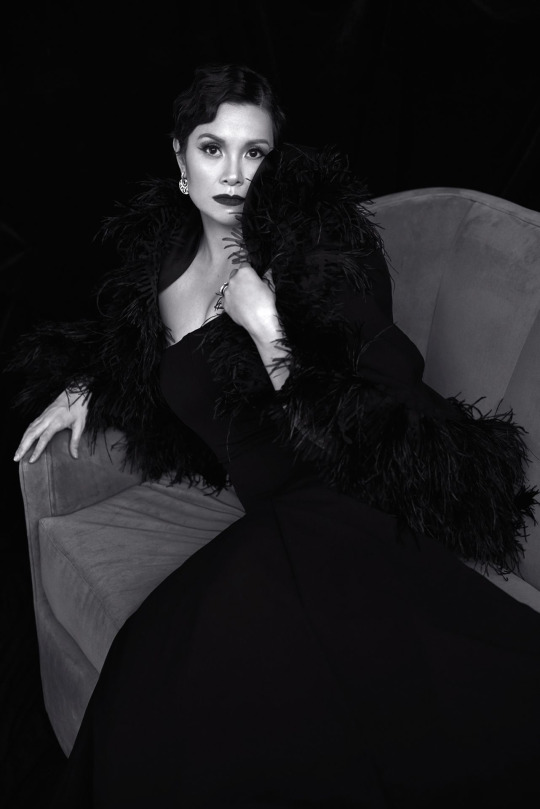

youtube
"She may have had a second chance at winning, but we've got to make things fair. Let's see how she does up against not one, but two of Broadway's biggest Divas."



youtube
"Just like her Broadway career, Patti LuPone rises from the dead. She's just here for the extra chaos, and I cannot wait to see the results."
#broadwaydivastournament#broadway#tournament poll#broadway divas#musical theatre#bernadette peters#lea salonga#patti lupone#round 4
42 notes
·
View notes
Text
THIS DAY IN GAY HISTORY
based on: The White Crane Institute's 'Gay Wisdom', Gay Birthdays, Gay For Today, Famous GLBT, glbt-Gay Encylopedia, Today in Gay History, Wikipedia, and more … June 4
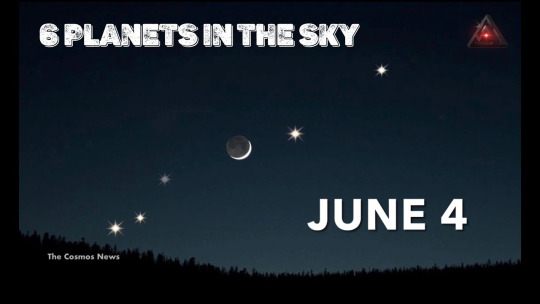

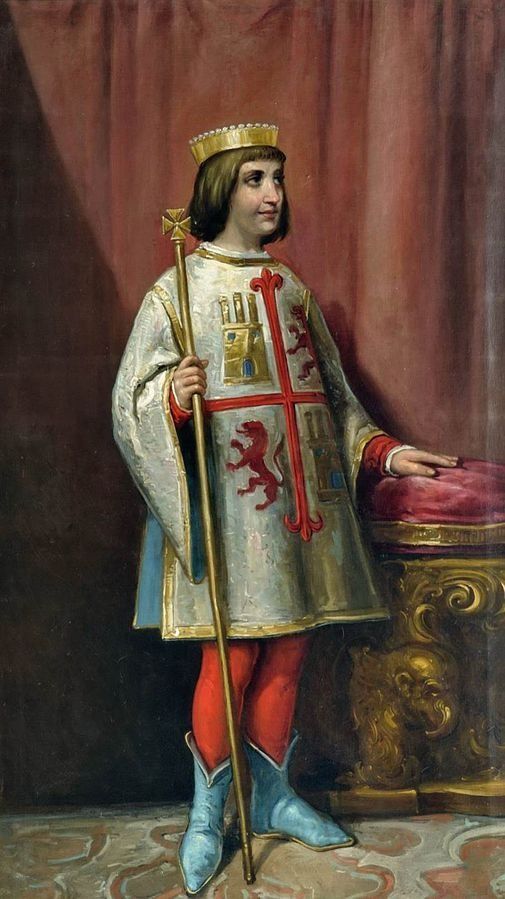
1464 – Spain: King Henry IV, half brother of Queen Isabel, is called a “puto” (male slut) at his symbolic public dethronement in effigy. This ceremony became known by its detractors as the farce of Ávila and has been recorded as such in history.

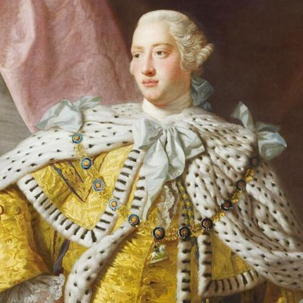
1738 – King George III of Great Britain, born (d. 1820); The first English-born Hanoverian king and the reigning monarch during the American War of Independence, George III was the subject of much gossip during his youth. The gossip is interesting in that the young king actually walked into a preexisting rumour. George’s father, Frederick, the Prince of Wales, had been much taken with the charming Earl of Bute, whom he found an agreeable whist companion. When Frederick died, Bute, who had constantly risen in court ranks, stayed on, presumably as the lover of Frederick’s widow.
The adolescent George, at eighteen, was very much the opposite of Hamlet. Rumour had it that he not only did not want to drive the usurper from his mother’s bed, but that he wanted to be there in her place. Bute’s elevation to secretary of state under George only heightened court gossip. How much of this is true, no one knows. That mother and son were both taken with the handsome Bute is true, but the rest is speculation.

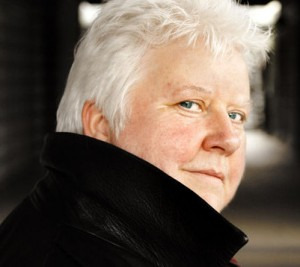
1955 – Born: Prolific Scottish mystery writer Val McDermid has three very successful series of novels and has been the recipient of numerous awards for crime fiction. Several of her works have been adapted for television. Val McDermid comes from Fife in the coal-mining region of eastern Scotland.
She was born on June 4, 1955, in the town of Kirkcaldy and grew up there. An only child, she was frequently in the company of adults or off on her own, sometimes spending whole days abroad in the countryside with only her dog for company. Her parents were of the working class, but they realized the value of a good education and also strongly encouraged their daughter to read as much as possible. Because of her love of books McDermid "developed a secret life of the imagination" at an early age. McDermid recalls feeling "different" as a child but at first attributed the sentiment to her desire to become a writer, which indeed was a far cry from the typical occupations in her small hometown.
Eventually she came to understand her sexual orientation, and her relatives proved supportive when she came out to them. "When I realized I was gay, no one stopped speaking to me," she said. "I wasn't cast adrift for bringing disgrace and shame upon the family."
The school system in Fife saw McDermid as different in another way--as a student of exceptional promise. She was selected for the "1E" program, in which one or two outstanding pupils per year were advanced a grade and taught in a special class. McDermid found this beneficial in that it gave her "a lifelong habit of hard work and the expectation of success," but because the "1E" children were set apart from their peers, it also "left her with an abiding sense of being an outsider."
Because of her academic success, McDermid was accepted by Oxford University at sixteen, one of the youngest students ever admitted. She studied at St. Hilda's College there, earning a bachelor's degree in English in 1975. After graduation, she embarked on a career in journalism.
McDermid quit her job as a journalist in 1991, but by that time she was already a published novelist. Of her first novel, which she wrote at twenty-one, McDermid, with characteristic humour, would later remark that "the best thing I can say about it is that I actually finished it."
She began writing her first crime novel in 1984. McDermid chose to make her lesbian sleuth Lindsay Gordon a reporter because, she said, "I had no idea how police investigate a murder, but I knew how journalists do their job." The response to Report for Murder upon its publication in 1987 was, in McDermid's wry words, "a resounding silence." Undeterred, she brought Gordon back in her next two books. There are at present five mysteries in the Lindsay Gordon series, but McDermid realized that she "was never going to make a living out of lesbian crime fiction."
She introduced her second detective, heterosexual private investigator Kate Brannigan, in Dead Beat in 1992 and has written five more novels in that series.
McDermid's third series features the crime-solving team of psychologist and profiler Dr. Tony Hill and police detective Carol Jordan. The debut novel for the pair, The Mermaids Singing (1995), was a great success and earned McDermid the prestigious Crime Writers Association's Gold Dagger Award. Mermaids and its sequel, The Wire in the Blood (1997), served as the basis for a six-part BBC television series also entitled The Wire in the Blood in 2002.
Though out and proud, McDermid put a gay sexual predator in her 2004 novel The Torment of Others, drawing criticism from some LGBTQ readers. "There's good and bad in every community," she commented. "To pretend otherwise only gives ammunition to your enemies."
In 2000 McDermid added a new line to her résumé, that of "mum," which has brought great joy to her life. Her then partner, a solicitor, conceived their son, Cameron, through artificial insemination, and immediately after his birth, McDermid obtained joint parenting rights through a court order. The couple eventually broke up, and Cameron now divides his time between his two mothers' homes. McDermid calls the arrangement "civilized" and emphasizes that the parents put their son's welfare first. McDermid's new partner is an American publisher.


1947 – Hans Martin Hirschi is an author, writer and training executive and LGBT rights activist based in Sweden.He is also co-founder and president of Yaree, an independent publisher and consultancy firm.
Hirschi was born and raised in Samedan, Switzerland. He learned seven languages before graduating high school and five Scandinavian languages in college. Hirschi studied literature at the University of Gothenburg.
Hirschi began writing Greek mythology as a teenager. He wrote a book about e-learning pedagogy and another about his management philosophies during his corporate career.
After his son was born, Hirschi wrote fictional works. He has self-published a poetry book and a short story. He has also published four novels and an e-book documenting his experience with parenting in India.
Hirschi is a member of the Swedish Writers' Union and the Writers' Center in Sweden.
In 2015, Hirschi released his first science fiction novel, Willem of the Tafel. Hirschi's novels try to tell positive, hopeful stories for the LGBT community, without shying away from difficult topics, and often center around families and relationships.
In 2018 Hirschi ventured into writing for a much younger audience with his first children's book and his youth fantasy series The Golden One which tackles the environmental challenges facing Earth but also the gap between those growing up and the adults.
Hirschi lives on an island off the coast of Sweden with his husband Alex and their son Sascha.


1971 – Peter Jöback, born in Stockholm, Sweden, is a Swedish singer,actor and musical artist.
Peter Jöback got his big breakthrough his collaboration with ABBA's Björn Ulvaeus and Benny Andersson. In their musical Kristina från Duvemåla (The Emigrants) at Malmö Opera and Music Theatre, Jöback created the role of Robert and his theme song, "Guldet blev till sand", broke every record in the Swedish charts. The musical was seen by over one million Swedes and the original cast CD-box became a triple-platinum album and received several Swedish Grammy awards. Jöback received his first Golden Mask for his role as Robert.
Cameron Mackintosh discovered Peter Jöback's talent and offered him the lead as Chris in Miss Saigon at the Theatre Royal, Drury Lane in London's West End in 1997. Three years later at the same theatre, Jöback created the role of Michael in Macintosh's original production of The Witches of Eastwick.
Peter had a brief foray into films when he voiced the lead role in the Swedish language version of the smash animated hit – Aladdin. He continued this arrangement in the film's sequel as well as the Aladdin TV series.
In 2004, Peter made the news when he came out as gay on Swedish television in an interview with popular host Kristian Luuk. Reactions to this revelation were generally very positive and supportive.Peter Jöback entered Melodifestivalen 2010 the Swedish Pre-selection for the Eurovision Song Contest 2010. He received a wildcard from SVT. His song, "Hollow", reached the final of the competition, ultimately finishing in 9th position.


1978 – Robin Lord Taylor is an American film and television actor and director, known for Accepted (2006), Another Earth (2011) and Would You Rather (2012). He stars in the television drama series Gotham as Oswald Cobblepot, The Penguin.
A native of Shueyville, Iowa, Taylor attended Solon High School and Northwestern University. Since 2000, he has lived in New York, where Gotham is filmed.
In a November 2014 Glamour Magazine interview, Taylor was asked, "I notice you are wearing a wedding ring on your ring finger. Are you married?" Without revealing his spouse's gender, he responded, "I am married! I like to keep it private, but I've been married for over three years, and we've been together for 10 1/2. No kids. No kids yet!"
In a March 2015, Slate Magazine noted Taylor as "openly gay" in an article discussing the typecasting of gay actors. Taylor, himself, added: "I feel like the landscape has totally changed. Regardless of sexual preference, it’s more that as a character actor, the less I reveal about myself, the better. My favourite actors are the ones I know least about."
Taylor has appeared in several acclaimed television series, such as The Walking Dead, Law & Order, Law & Order: Special Victims Unit, The Good Wife and Person of Interest.

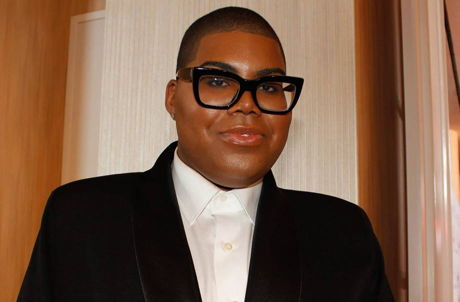
1992 – Earvin "EJ" Johnson is an American television personality and socialite.
Earvin Johnson III was born in Beverly Hills, California, to Magic Johnson and Earlitha Kelly. He has an older brother, Andre, and a younger sister, Elisa. He was raised in the Pentecostal Christian faith. Johnson attended New York University, studying hospitality with a focus on event planning and design. Johnson came out as homosexual to his family at the age of 17 and came out publicly in 2013 after a report by TMZ published pictures of him holding hands with a male friend. He was supported by his family in his decision to come out publicly. After coming out, Johnson left the West Angeles Church of God in Christ, the church he grew up in, due to their views on homosexuality.
Johnson joined the cast of the E! reality television series Rich Kids of Beverly Hills in 2014 as a recurring cast member in the first season. He became a main cast member for the next three seasons.[10] The show was cancelled after four seasons. Johnson then starred in his own spin-off reality series EJNYC, one of the first reality series to profile a young LGBTQ person of colour. In 2014 Johnson joined E! News as a news personality and commentator, covering shows for New York Fashion Week as well as having a recurring commentary role on Fashion Police.[13] He also appeared as a guest commentator on Hello Ross in 2014. He was a guest star during season 4 of Real Husbands of Hollywood. In 2016 Johnson was featured in an It Got Better short documentary produced by L/Studio. In 2017 Johnson moderated a panel at BeautyCon called The Gender Revolution. In 2017 Johnson was a guest host on The Real. In an ESPN interview with Kelley L. Carter, Johnson discussed his television experiences and plans to pursue a career in fashion.Johnson has been noted for his feminine and androgynous fashion style. He revealed that after Caitlyn Jenner's coming out as a transgender woman, he thought about transitioning, but decided against it.
Johnson is close friends with Gaïa Jacquet-Matisse, Kyra Kennedy, Ezra J. William, Andrew Warren, and Tiffany Trump. The group has been nicknamed the "Rich Kids of Instagram" by the New York Post and the "Snap Pack" by The New York Times and New York Magazine.


2009 – On this date it was announced that the ACLU had successfully forced the Tennessee public school system to stop blocking educational LGBT websites. This just over two weeks after the American Civil Liberties Union filed suit against two Tennessee school districts for unconstitutionally blocking student access to such sites.


13 notes
·
View notes
Photo

TINA TURNER (1939-Died May 24th 2023,at 83).American-born and naturalized Swiss singer, dancer, actress and author. Widely referred to as the "Queen of Rock 'n' Roll", she rose to prominence as the lead singer of the Ike & Tina Turner Revue before launching a successful career as a solo performer.Turner began her career with Ike Turner's Kings of Rhythm in 1957. Under the name Little Ann, she appeared on her first record, "Boxtop", in 1958. In 1960, she debuted as Tina Turner with the hit duet single "A Fool in Love". The duo Ike & Tina Turner became "one of the most formidable live acts in history".They released hits such as "It's Gonna Work Out Fine", "River Deep – Mountain High", "Proud Mary", and "Nutbush City Limits" before disbanding in 1976.In the 1980s, Turner launched "one of the greatest comebacks in music history".Her 1984 multi-platinum album Private Dancer contained the hit song "What's Love Got to Do with It", which won the Grammy Award for Record of the Year and became her first and only number one song on the Billboard Hot 100. At age 44, she was the oldest female solo artist to top the Hot 100.Her chart success continued with "Better Be Good to Me", "Private Dancer", "We Don't Need Another Hero (Thunderdome)", "Typical Male", "The Best", "I Don't Wanna Fight", and "GoldenEye". During her Break Every Rule World Tour in 1988, she set a then-Guinness World Record for the largest paying audience (180,000) for a solo performer.Turner also acted in the films Tommy (1975), Mad Max Beyond Thunderdome (1985), and Last Action Hero (1993). In 1993, What's Love Got to Do with It, a biographical film adapted from her autobiography I, Tina: My Life Story, was released. In 2009, Turner retired after completing her Tina!: 50th Anniversary Tour, which is the 15th highest-grossing tour of the 2000s. In 2018, she became the subject of the jukebox musical Tina.Having sold over 100 million records worldwide, Turner is one of the best-selling recording artists of all time. She has received 12 Grammy Awards, which include eight competitive awards, three Grammy Hall of Fame awards, and a Grammy Lifetime Achievement Award. She is the first black artist and first woman to be on the cover of Rolling Stone. Rolling Stone ranked her among the 100 Greatest Artists of All Time and the 100 Greatest Singers of All Time.Turner has a star on the Hollywood Walk of Fame and the St. Louis Walk of Fame. She has twice been inducted into the Rock and Roll Hall of Fame, with Ike Turner in 1991 and as a solo artist in 2021.She is also a 2005 recipient of the Kennedy Center Honors and Women of the Year award.https://en.wikipedia.org/wiki/Tina_Turner
#Tina Turner#American Musicians#Musicians#Music Legends#Notable Deaths in 2023#Notable Deaths in May 2023#What's Love Got To Do With It#We Don't Need Another Hero#Ike & Tina Turner
116 notes
·
View notes
Note
thank you for all you do! i just got into czech(o)slovak cinema because of you and was wondering if you had any favorite films on the GD that you recommend?
Hi! ❤️ Thank you for your words! I’m glad my blog has encouraged you to start exploring CS cinema! I’m pretty sure you won’t be disappointed 🙂
I’ll list my favourite films from each folder but you can’t go wrong with any film that you’ll find there.
30's - 40's
Divá Bára / Wild Barbara (1949) dir. by Vladimír Čech (drama)
Eva tropí hlouposti / Eva Fools Around (1939) dir. by Martin Frič (comedy, romance)
Podobizna / The Portrait (1947) dir. by Jiří Slavíček (drama, horror, mystery)
Fairy Tales
Byl jednou jeden král… / Once Upon a Time, There Was a King… (1954) dir. by Bořivoj Zeman
Jak se budí princezny / How to Wake Up Princesses (1977) dir. by Václav Vorlíček
Perinbaba / The Feather Fairy (1985) dir. by Juraj Jakubisko
Princ a Večernice / The Prince and the Evening Star (1978) dir. by Václav Vorlíček
Princezna se zlatou hvězdou / The Princess with the Golden Star (1959) dir. by Martin Frič
Pyšná princezna / The Proud Princess (1952) dir. by Bořivoj Zeman
S čerty nejsou žerty / Give the Devil His Due (1984) dir. by Hynek Bočan
Tři oříšky pro Popelku / Three Wishes for Cinderella (1973) dir. by Václav Vorlíček
Films directed by Juraj Herz
Morgiana (1972) (horror, drama)
Panna a netvor / Beauty and the Beast (1978) (fairy tale, horror, romance)
Petrolejové lampy / The Petroleum Lamps (1971) (drama)
Spalovač mrtvol / The Cremator (1968) (drama, horror)
Films directed by Karel Kachyňa
Kočár do Vídně / A Carriage Going to Vienna (1966) (drama, war)
Malá mořská víla / The Little Mermaid (1976) (fairy tale, drama)
Ucho / The Ear (1970) (drama, thriller)
Musicals / Opera
Noc na Karlštejně / A Night at Karlstein (1973) dir. by Zdeněk Podskalský
Films directed by Karel Zeman
Baron Prášil / The Fabulous Baron Munchausen (1961) (sci-fi, fantasy, adventure)
Čarodějův učeň / The Sorcerer's Apprentice (1977) (animated, horror, fairy tale)
Na kometě / On the Comet (1970) (sci-fi, fantasy, adventure)
Vynález zkázy / Invention for Destruction or The Fabulous World of Jules Verne (1958) (sci-fi, fantasy, adventure)
Other
Marketa Lazarová (1967) dir. by František Vláčil (drama, history)
Parodies / Comedies
Adéla ještě nevečeřela / Adela Has Not Had Her Supper Yet (1977) dir. by Oldřich Lipský
Dívka na koštěti / The Girl on the Broomstick (1971) dir. by Václav Vorlíček
Jak utopit Dr. Mráčka aneb Konec vodníků v Čechách / How to Drown Dr. Mracek, the Lawyer (1974) dir. by Václav Vorlíček
Jára Cimrman ležící, spící / Jára Cimrman Lying, Sleeping (1983) dir. by Ladislav Smoljak
Tajemství hradu v Karpatech / The Mysterious Castle in the Carpathians (1981) dir. by Oldřich Lipský
Recent Films
Fair Play (2014) dir. by Andrea Sedláčková (drama)
Kolja (1996) dir. by Jan Svěrák (comedy, drama)
Kytice / Wild Flowers (2000) dir. by F. A. Brabec (drama, horror, romance, poetic)
Pelíšky / Cosy Dens (1999) dir. by Jan Hřebejk (comedy, drama)
Requiem pro panenku / Requiem for a Doll (1991) dir. by Filip Renč (drama, thriller)
Želary (2003) dir. by Ondřej Trojan (drama, war, romace)
New Wave
Lásky jedné plavovlásky / Loves of a Blonde (1965) dir. by Miloš Forman (comedy, drama)
Slávnosť v botanickej záhrade / Celebration in the Botanical Garden (1969) dir. by Elo Havetta (comedy)
Slnko v sieti / The Sun in the Net (1962) dir. by Štefan Uher (drama)
Valerie a týden divů / Valerie and Her Week of Wonders (1970) dir. by Jaromil Jireš (fantasy, horror)
Silent Films
Erotikon (1929) dir. by Gustav Machatý (drama, romance)
TV Series
Arabela (1980) dir. by Václav Vorlíček (comedy, fairy tale, fantasy)
Návštěvníci / The Visitors (1983) dir. by Jindřich Polák (sci-fi, comedy)
Films directed by Věra Chytilová
Ovoce stromů rajských jíme / We Eat the Fruit of the Trees of Paradise (1969) (CS new wave movement)
Sedmikrásky / Daisies (1966) (comedy, CS new wave movement)
Vlčí bouda / Wolf’s Hole (1986) (horror, drama)
Enjoy❣️
150 notes
·
View notes
Note
For your Fourth World reading do you have a reading order you could share with us? Or recommendations on where to start? Sorry if this has been asked before
No need to apologize! I've been meaning to write up my Fourth World recs so thank you for the reminder. Also it is unfortunately a short list lol.
The Fourth World by Jack Kirby:
Superman's Pal Jimmy Olsen: Kirby wrote and drew issues #133-148. This is where he launched the Fourth World, and where we first saw Darkseid and a number of other characters and concepts. It is a little tangential to the main Fourth World storyline (and some of it, like the two Goody Rickels issues, is REALLY weird and not necessarily in a good way). I would say if you are interested in the Fourth World from a comics history perspective, you should read Kirby's Jimmy Olsen, but if you are interested from a blorbo perspective and just want to read about Orion or Scott or whoever, you can skip it.
New Gods (1971): This is Orion's series. An absolute must, this is the heart of the Fourth World. The original run is issues #1-11 (there are a couple series that pick up the numbering, but the first 11 issues are the real deal).
Forever People (1971): I would say this is the other book that is really central to Kirby's magnum opus and the themes he was exploring. Again, less interesting from a blorbo perspective (I'm sure Mark Moonrider is someone's blorbo...) but it's only 11 issues so I would recommend reading it for the historical/thematic value. Do it for Kirby!
Mister Miracle (1971): The other blorbo! Kirby's original run is #1-18.
New Gods (1984) #6: In 1984 DC reprinted the original New Gods run as double-sized issues (so #1 contains the original #1 and #2 from 1971, etc.). Issue #6 reprints the original New Gods #11 and then adds new material to "conclude" Kirby's story. But you'll want to continue and read...
The Hunger Dogs (also called DC Graphic Novel #4): This was Kirby's conclusion to the Fourth World saga. It's not his original vision, but it's the most DC would allow him. He is not quite at the heights he was in 1971, but it's nice to see him get a chance to conclude his tale, and it's a must-read if you ship Orion and Lightray.
The Fourth World by people who aren't Jack Kirby:
New Gods (1991): This is Rachel Pollack's run and it's excellent. The art is extremely 1991 but the writing makes up for it. The last three issues of the series are written and drawn by John Byrne instead, and they're fine - you can read them or skip them, doesn't matter.
Orion (2000): Walt Simonson's run, AN ABSOLUTE MUST-READ. RUN DON'T WALK. PLEASE PLEASE PLEASE READ THIS. Orion suffers so much and it's so delicious to me.
Solo #7: There are only two pages of Fourth World content in here but it's Orion betting Scott he can come up with a death trap Scott can't escape and then literally just trying to kill him for fun while Lightray has a panic attack. Orion and Scott are both lunatics and I love that for them. Brothers of all time.
Both of DC's YA graphic novels about these characters, Mister Mircle: The Great Escape by Varian Johnson and Daniel Isles and Barda by @ngoziu, are excellent.
AND UNFORTUNATELY THAT IS IT. Scott and Barda are in JLI which I will always recommend, but it's not strictly speaking a Fourth World book. Orion is in Grant Morrison's JLA which is a classic, but he doesn't have a huge role in it as I recall. You should already be reading Kelly Thompson's current run on Birds of Prey because it's perfect but Barda is especially perfect in it.
The nice (?) thing about the Fourth World is that every writer basically completely ignores all previous writers except Kirby so there's not a lot of continuity to track. If you read Kirby, you can encounter the characters anywhere else and know everything you need to know.
Happy reading!
9 notes
·
View notes
Text
best films of 2023
new releases
may december (todd haynes)
pacifiction (albert serra)
showing up (kelly reichardt)
master gardener (paul schrader)
trenque lauquen (laura citarella)
knock at the cabin (m. night shyalaman)
afterwater (dane komljen)
music (angela schanelec)
jawan (atlee)
in our day (hong sang-soo)
discoveries
o'er the land + the illinois parable (deborah stratman, 2009/2016)
the grapes of wrath + my darling clementine + forte apache + wagon master (john ford, 1940-1950)
history lessons + from the clouds to the resistance + the return of prodigal son + these encounters of theirs (jean-marie straub + danièle huillet, 1972/1979/2003-2006)
colossal youth + horse money (pedro costa, 2006-2014)
gang of four + up down fragile (jacques rivette, 1989-1995)
pine flat + PODWORKA (sharon lockhart, 2006-2009)
the sunchaser (michael cimino, 1996)
way of gaucho (jaqcues tourneur, 1952)
city of hope + lone star (john sayles, 1991/1996)
detours (katya selenkina, 2021)
at sea + three landscapes (paul b. hutton, 2007-2013)
public housing (frederick wiseman, 1997)
11x14 + el valley centro + los + sogobi (james benning, 1977/1999-2002)
here and elsewhere (jean-luc godard, 1976)
walking and talking (nicole holofcener, 1996)
my friend ivan lapshin (aleksey german, 1984)
angel dust (gakuryu ishii, 1994)
acto da primavera (manoel de oliveira, 1963)
love me tonight (rouben mamoulian, 1932)
wild side (donald cammell, 1996)
trois ponts sur la rivière + saltimbank (jean-claude biette, 1999-2003)
public enemies (michael mann, 2009)
blue diary + the joy of life (jenni olson, 1997/2005)
+ full list on letterboxd 💌
25 notes
·
View notes
Text
ides of march

well, its tumblr's favorite holiday and who can blame us? The assassination of Julius Caesar is probably one of the only group projects that ever went down the way it was supposed to with, well, not complete group participation (there were said to be upward of 60 people involved but only 23 stab wounds - obviously someone was not carrying their weight) but at least a good effort was made at it. But lets take a moment, between our jokes about salad and Animal Crossing butterfly nets to look at what else has happened in history on the Ides of March. For instance, did you know, on March 15th:
1493 - Columbus returned to Spain after 'discovering' the new world.
1580 - Phillip II of Spain put a bounty on the head of Prince William I of Orange for 25,000 gold coins for leading the Dutch revolt against the Spanish Hamburgs
1744 - King Louis XV of France declares war on Britain
1767 - Andrew Jackson, who would go on to be the seventh president of the US, was born.
1820 - Maine became the 23rd state in the US
1864 - the Red River Campaign, called 'One damn blunder from beginning to end' started for the Union Forces in the American Civil War
1889 - a typhoon in Apia Harbor, Samoa sinks 6 US and German warships, killing 200
1917 - Czar Nicholas II abdicated the Russian throne, bringing an end to the Romanov dynasty
1955 - the first self-guided missile is introduced by the US Air Force
1965 - TGI Friday's opens its first restaurant in New York City
1991 - in LA, four police officers are brought up on charges for the beating of Rodney King
2018 - Toys R Us announces it will be closing all its stores
2019 - a terrorist attacks two mosques in Christchurch, New Zealand, killing 51, and wounding 50 others
Oof! Pretty bleak, isn't it? It would almost make you think that the day is just bad luck, start to finish and its probably just as well, we're all focusing on assassination instead of other horrors. But wait - its not all bad news! The Ides of March has some tricks up its sleeve yet (joke intended). I'd be telling you only half the story if I didn't add:
1854 - Emil von Behring is born and will eventually become the first to receive the Nobel Prize in medicine for his discovery of a diphtheria antitoxin, being called 'the children's savoir' for the lives it saves
1867 - Michigan is the first state to use property tax to support a university
1868 - the Cincinnati Red Stockings have ten salaried players, making them the first professional baseball team in the US
1887 - Michigan has the first salaried fish and game warden
1892 - the first automatic ballot voting machine is unveiled in New York City
1907 - Finland gives women the right to vote, becoming the first to do so in Europe
1933 - Ruth Bader Ginsberg is born and will go on to become a US Supreme Court justice
1934 - the 5$ a day wage was introduced by Henry Ford, forcing other companies to raise their wages as well or lose their workers
1937 - the first state sponsored contraceptive clinic in the US opens in Raleigh, North Carolina
1946 - the British Prime minister recognizes India's independence
1947 - the US Navy has its first black commissioned officer, John Lee
1949 - clothes rationing ends in Britain, four years after the end of WWII
1960 - ten nations meet in Geneva for disarmament talks
1968 - the Dioceses of Rome says it will not ban 'rock and roll' from being played during mass but that it deplores the practice - also in 1968, LIFE magazine titles Jimi Hendrix 'the most spectacular guitarist in the world'
1971 - ARPANET, the precursor of the modern day internet, sees its first forum
1984 - Tanzanian adopts a constitution
1985 - symbolics.com, the first internet domain name, is registered
The Ides of March turns out to just be a day, like any other day in history.
Unless you're us. In which case -
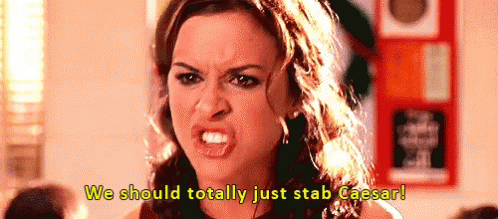
#ides of march#happy ides of march#julius caesar#today in history#please take some of my 'bad' dates as tongue in cheek#we love you maine#and a few of my dates fit both the good and bad side of the things so I just went with whichever I was on at the time#feel free to wiggle them around to a more appropriate column
14 notes
·
View notes
Text

Dear @faisonsunreve thanks for the tag. This was definitely a time taking task but so much fun to do. A true time travel to your watching history. To my surprise there are three French films and three Tom Hanks films included. 😄
A few comments about certain choices.
Favorite film of all time: The Thief of Bagdad (1940): The jewel of the film is Conrad Veidt’s insane Jaffar dressed up with the turban.
Best script: Some Like It Hot (1959): The story about two antihero musicians trying to make a living and avoiding gangsters by dressing as women and joining a female band and traveling to Miami is still unique to watch.
Favorite poster: The Empire Strikes Back (1980): Memories from the childhood. Darth Vader’s perhaps a little too epic posture promises you an emotional adventure and that promise will be fulfilled.
"I’ll watch it some day": Napoléon (1927): @missholson and I were introduced to this 6-hour biopic of Napoleon and we were stunned by the shots of the twenty-minute triptych sequence, where widescreen panorama is made by projecting multiple-image montages simultaneously on three screens. Blu-ray is waiting on the shelf.
Big personal impact: Elvis (2022): I wasn’t prepared for the narrative where female gaze and male vulnerability are allowed and validated.
You like, but everyone hates: Angels & Demons (2009): Don’t know today’s reception but when it was released the film was heavily criticized by the critics and the audience. I like both this and The Da Vinci Code (2006), but having more convincing characters, plot and hold for the entirety makes it better than the first one.
Underrated: The Ninth Gate (1999): Polanski is a very contradictory director for his sexual abuse charges, therefore it feels shameful to admit liking his films or considering his films to be valued. Many find Gate as a dull thriller. The film doesn’t rely on jump scares or gore but the mystery around the occult books and the things you can’t see.
"Why do I like this?": Bachelor Party (1984): This is my favourite question of them all. I discussed with @faisonsunreve about on what basis you should answer this and does it reveal your true movie taste. The 80’s crazy comedy is a silly and out-dated genre and that is why the films of this era fascinate me. Bachelor Party is full of lame humor and over-the-top characters. Yet the storyline is versatile and entertaining. Young Tom Hanks embodies the past.
Great soundtrack: La Cage aux Folles (1978): Ennio Morricone has said first he has to understand the film, the images, the story and the director’s intentions before starting to compose. I would like to know his study for Folles, because the soundtrack has such a humorous, characteristic and warm sound.
That cinematography: Furiant (2015): I was balancing between Tinker Tailor Soldier Spy (2011) and La double vie de Véronique (1991), but this short film stands out with the way the rural landscapes, the dimly lit rooms and the unspoken moments are visualized (and edited) by the producer, director, writer, cinematographer and editor Ondřej Hudeček.
Criminally overlooked: Angélique film series (1964-68): Yes, you could put almost any Conrad Veidt film here, however I chose this. I have been fond of Angélique films since I was a child. These spectacles tell the story of Angélique in the time of King Louis XIV of France. Romance, adventure, scheming with breathtaking soundtrack and costume design, beautiful Michèle Mercier in the leading role and the flashy way of speaking French offer us an exquisite interpretation from the 60’s.
Favorite active director: Peter Strickland: I have seen only The Duke of Burgundy (2014) and Flux Gourmet (2022), nevertheless his style of using the aesthetics of Italian genre films and the intimacy he creates is just heartwarming.
Anyone who wants to make their own version, please do and let me know. 📼📀📦🔦
#favorite movie meme but different#the thief of bagdad#some like it hot#star wars#the empire strikes back#napoléon#elvis 2022#werk ohne autor#angels & demons#moulin rouge#the ninth gate#titanic#bachelor party#la cage aux folles#furiant#three men and a baby#drive#lord of the rings#bridget jones's diary#north by northwest#wax mask#angélique#under sandet#peter strickland#aladdin#the dark knight#personal#tag game#own edit#own post
55 notes
·
View notes
Text
People online: Zionism is colonialism!! Stop eraseing the natives!
Genetic studies: umm. Well, actually -
I'm not biologist! But I try to explain this in simpler words. Feel free to correct me if I misunderstood anything :)
(can't believe I spent about 4 hours on it)
In short - the study compared the Y genes of several different groups - aka the paternal genetic history (father-to-son).
Finding more similarities= genetically closer= has a more common ancestry.
(like, brother is closer then cousin closer then a stranger)
Let's start!
"The investigation of the genetic relationship among three Jewish communities revealed that Kurdish and Sephardic Jews were indistinguishable from one another, whereas both differed slightly, yet significantly, from Ashkenazi Jews. The differences among Ashkenazim may be a result of low-level gene flow from European populations and/or genetic drift during isolation."
AKA: genetically speaking, there's no difference between Jews from various MENA countries (Mizrahim). (Sephardic were mostly Moroccan origins, Kurdish sample mostly north Iraq/Syrian origins)
An important note: Eda refers to the spesific traditions/subgroup, and passed down by the paternal line (father-to-son). This is in order to preserve traditional practices, that were different in different communities (e1)
There's a small genetic difference between Mizrahi jews and Ashkenazi Jews. This could be due to isolation or "low level gene flow" (in other words, converts and (mostly) children born from rape. Which was... way more common then you think. Look up "Pogrom".)
Next!
In a report published elsewhere, we recently showed that Jews and Palestinian Arabs share a large portion of their Y chromosomes, suggesting a common ancestry (Nebel et al. 2000). Surprisingly, in the present study, Jews were found to be even closer to populations in the northern part of the Middle East than to several Arab populations. It is worth mentioning that, on the basis of protein polymorphisms, most Jewish populations cluster very closely with Iraqis (Livshits et al. 1991) and that the latter, in turn, cluster very closely with Kurds (Cavalli-Sforza et al. 1994). These findings are consistent with known cultural links that existed among populations in the Fertile Crescent in early history.
Here, the mention earlier studies about genetic links between Jews (of all Edot) and Palestinian arabs. This can mean there's a common ancestry to the population (same grand-grand-etc.-father).
Jews are geneticly similar to Iranians, who are geneticly similar to Kurds (e2)
Those genetic links aren't suprising, and consistent with what we know from history about population and communities in the Fertile Crescent area.
Muslim Kurds
The Kurds are considered an ancient autochthonous population (Kinnane 1970; Pelletiere 1984) who may even be the descendants of the shepherds who first populated the highlands during the Neolithic period (Comas et al. 2000). Although Kurdistan came under the successive dominion of various conquerors, including the Armenians, Romans, Byzantines, Arabs, Ottoman Turks, and Iraqis (Kinnane 1970), they may be the only western Asian group that remained relatively unmixed by the influx of invaders, because of their protected and inhospitable mountainous homeland (Pelletiere 1984). The Y chromosome variation of Muslim Kurds falls within the spectrum observed in other populations (Turks and Armenians) living in the same region. The three populations are closer to Jews and Arabs than to Europeans. This is in good agreement with data on classical markers (Cavalli-Sforza et al. 1994). However, on the basis of mtDNA polymorphisms, Kurds were reported to be more closely related to Europeans than to Middle Easterners (Comas et al. 2000).
Kurds are very ancient ethnic group. Possibly the only western-asian group that remained relatively unmixed, despite (pointing history).
Kurds Y chromosomes are pretty similar to those in the same area (Turks and Armenians), and those three groups Y chromosomes are more similar to Jews and Arabs then to Europeans.
Now, that's interesting: the similarities is also in classical markers, but it's different from studies on mtDNA (Maternal/mother line), which then shows more similar to Europeans than Arabs and Jews.
(idk if there are rumours/historical kurds stories/traditions about Patriarch communities with brides from distance? Or Matriarch communities with grooms from the (other) distance? But it sounds like the historical story is something like that.
Palestinian Arabs and Bedouin
Bedouin are largely nomadic Arab herders, with a tribal organization. They live in all Arab countries, constituting about one tenth of the population (Cavalli-Sforza et al. 1994). The Bedouin population of the Negev desert was found to be most distant from Jews and Muslim Kurds and to be closely related only to Palestinians. Both these Arab populations differ from the other Middle Eastern groups sampled for the present study, mainly in having a higher frequency of Eu 10 chromosomes, the majority of which they share with each other. Traditional marriage practices—such as male polygamy, a high rate of consanguineous marriages, and patrilocality—may have enhanced the low haplogroup and haplotype diversity of the Negev Bedouin, as was suggested elsewhere for the Bedouin tribes in the Sinai Peninsula (Salem et al. 1996).
Bedouins from the Negev (Southern Israel) were most different from Jews and Muslim-kurds, and closely related to Palestinian Arabs. Both Arab groups were(geneticly) very similar to eachother, but different from the other Middle Eastern groups in the study.
The main difference was a higher frequency of Eu 10 chromosomes, that were similar in the 2 groups.
We propose that the Y chromosomes in Palestinian Arabs and Bedouin represent, to a large extent, early lineages derived from the Neolithic inhabitants of the area and additional lineages from more-recent population movements. The early lineages are part of the common chromosome pool shared with Jews (Nebel et al. 2000). According to our working model, the more-recent migrations were mostly from the Arabian Peninsula, as is seen in the Arab-specific Eu 10 chromosomes that include the modal haplotypes observed in Palestinians and Bedouin. These haplotypes and their one-step microsatellite neighbors constitute a substantial portion of the total Palestinian (29%) and Bedouin (37.5%) Y chromosome pools and were not found in any of the non-Arab populations in the present study. The peripheral position of the modal haplotypes, with few links in the network (fig. 5), suggests that the Arab-specific chromosomes are a result of recent gene flow. Historical records describe tribal migrations from Arabia to the southern Levant in the Byzantine period, migrations that reached their climax with the Muslim conquest 633–640 a.d.; Patrich 1995). Indeed, Arab-specific haplotypes have been observed at significant frequencies in Muslim Arabs from Sena (56%) and the Hadramaut (16%) in the Yemen (Thomas et al. 2000). Thus, although Y chromosome data of Arabian populations are limited, it seems very likely that populations from the Arabian Peninsula were the source of these chromosomes. The genetic closeness, in classical protein markers, of Bedouin to Yemenis and Saudis (Cavalli-Sforza et al. 1994) supports an Arabian origin of the Bedouin. The alternative explanation for the distribution of the Arab-specific haplotypes (i.e., random genetic drift) is unlikely. It is difficult to imagine that the different populations in the Yemen and the southern Levant, in which Arab-specific chromosomes have been detected at moderate-to-high frequencies, would have drifted in the same direction.
The eu10 Y chromosomes geneticly linked to the arab peninsula, and wasn't found in non-arab population. It's very possible that arab-Palestinians and Bedouins are the descendants of immigrants and population movement, possibly during the Caliphate - the Muslim Empire (Arab dynasties 632-1258; Mamluk Sultanate 1250-1517; ottoman/turkish 1517-1924) (e2)
Example and more information undercut:
Eda (plural - Edot): community, subgroup. Usually refers to a group using different Minhagim (traditions).
For example, my Yemeni ancestors only said the "Hamotzi" prayer (said before eating bread) during Passover, as wheat was rare and expensive, and wasn't a usual part of their diet.
Another differences include Te'amim (ways to read the Torah. Sort of like 🎶 for voice); Kitniyot (o lo lithiyot/jk) - do you eat it on passover? What about the oil?; certain holidays (traditional Mimuna, Sigd.) (Yat kislev🙈)
Through history, even though most Jewish communities weren't completely isolated from one another, it still took a lot of time to pass questions and information. So different places gained different traditions.
Basically, it goes "(go by) paternal traditions" (מנהג אבות)
In the past, people that moved from one community to another would take over the new traditions.
Since moving and immigration became far more common, and started to move as communities, people kept their traditions. For example, in my area I have 5 small synagogues, each was founded by a community from different diaspora that wanted to keep their traditions.
And it's okay! It's even great 😸
(e2) kurds:
Oh look, another ethnic group fighting for freedom and right for self government.
Population: about 30m ppl worldwide. In current geography, the land split between Iraq, Syria and Turkey. Also fighting ISIS. Look up YPJ.
#genetic studies#israel#palestine#genetics#genetic screening#kurdistan#kurds#muslim#jews#arab#arab peninsula#Palestinians#Bedouin#biology#history#fascinating#iraq#syria#turkey#YPJ#ncbi#peer review#science#biology study
17 notes
·
View notes
Note
books (assuming it’s okay to submit more than one):
Ángeles Vicente, Zezé (1909)
Rosa Guy, Ruby (1976)
Deborah Hautzig, Hey, Dollface (1978)
Samuel R. Delany, Tales of Nevèrÿon (1979)
Elizabeth A. Lynn, Watchtower (1979)
Nancy Garden, Annie on My Mind (1982)
Alice Walker, The Color Purple (1982)
John Preston, Franny, the Queen of Provincetown (1983)
Samuel R. Delany, Stars in My Pocket Like Grains of Sand (1984)
Timothy Findley, Not Wanted on the Voyage (1984)
Jeanette Winterson, Oranges Are Not the Only Fruit (1985)
Chrystos, Not Vanishing (1988)
Ian Iqbal Rashid, Black Markets, White Boyfriends, and Other Elisions (1991)
Crìsdean Whyte (Christopher Whyte), Uirsgeul / Myth (1991)
Carlos Sanrune, El gladiador de Chueca (1992)
Tom Lennon, When Love Comes to Town (1993)
Fernanda Farias de Albuquerque and Maurizio Jannelli, Princesa (1994)
Qiu Miaojin, Notes of a Crocodile (1994)
Shyam Selvadurai, Funny Boy (1994)
Gregory Maguire, Wicked (1995)
Christos Tsiolkas, Loaded (1995)
Nina Revoyr, The Necessary Hunger (1997)
Lola Van Guardia (Isabel Franc), Con pedigree (1997)
Tom Lennon, Crazy Love (1999)
Micheál Ó Conghaile, Sna Fir (1999)
Laurie J. Marks, Fire Logic (2002)
Nalo Hopkinson, The Salt Roads (2003)
Esdras Parra, Aún no (2004)
Barry McCrea, The First Verse (2005)
Manuel Tzoc, Gay(o) (2010)
Tama Wise, Street Dreams (2012)
Dane Figueroa Edidi, Yemaya’s Daughters (2013)
Jamie Berrout, Otros Valles (2014)
Niviaq Korneliussen, Homo sapienne (2014)
Leanne Betasamosake Simpson, This Accident of Being Lost (2016)
Nathan Niigan Noodin Adler, Wrist (2016)
Trifonia Meliba Obono, La bastarda (2016)
Sofia Samatar, The Winged Histories (2016)
Kai Cheng Thom, Fierce Femmes and Notorious Liars (2016)
jia qing wilson-yang, Small Beauty (2016)
Billy-Ray Belcourt, This Wound Is a World (2017)
Elliot Cooper, Rogue Wolf (2017)
Kevin Lambert, Querelle de Roberval (2018)
Joshua Whitehead, Jonny Appleseed (2018)
Masande Ntshanga, Triangulum (2019)
Leanne Betasamosake Simpson, Noopiming: The Cure for White Ladies (2020)
Tlotlo Tsamaase, The Silence of the Wilting Skin (2020)
Bendi Barrett, Empire of the Feast (2022)
Simon Jimenez, The Spear Cuts Through Water (2022)
Kōtuku Titihuia Nuttall, Tauhou (2022)
if you’d rather keep it to one book at a time: Samuel R. Delany, Stars in My Pocket Like Grains of Sand (1984).
Thank you so much for this fantastic list! They're all queued.
14 notes
·
View notes
Text
A short story—or a poetic scribble—based on my headcannon about Slider which I’m going to include in my ongoing fic at some point!
Featuring: Slider being from a troubled family. Slimav being fluffy. Maverick being slightly clueless but trying his best.
Slider was the third generation Eastern German-Russian immigrant. His nana and his mother emigrated to the US in the 30s.
Slider learned cooking from his nana, and some of his signature dishes were related to his maternal origin. Veal Orloff, Jaeger schnitzel with short pasta, hearty soup with Regensburger wurst. Slider spoke English and German, with a bit of verbal understanding of Russian (something that made he and Ice close.), which meant not only did he cook oh so well, he did that without botching the pronunciation.
His estranged mother was very unstable and had two children with two different fathers before she cut all contact with her family. Slider was ten when he started being the caregiver of his half-brother, Daniel “Danny” Kerner on behalf of their mother. Slider was twelve when his nana became their legal guardian—and moved to New York from his hometown in Orange County.
His mother was never heard again since. Slider moved on, but he still checked missing and unidentified persons reports from California State from time to time.
Danny and Slider had always been close. Danny liked dogs, dancing, and Star Wars. He proceeded to become a ER nurse, working in a hospital in New York City. Slider couldn’t be more proud of his little guy. Or not-so-little-anymore guy. Smart, handsome, practical, and kind. He attended his graduation from UC Barkley in 1991 and cried his eyes out to the point Danny just had to call Maverick (or Pete, in layman’s words—who was his big brother’s “friend”. Yeah, Ronnie, I get it. A friend to call for an emotional support and also some words of congratulations at your brother’s graduation.) to calm him down.
Slider never disclosed his sexuality to his nana when she was alive. Only told Danny when he had a second boyfriend after Annapolis. Didn’t want to burden her. Didn’t want to lose her. Maybe she suspected things. Maybe she told Slider on a random day in summer of 1984, that she would always love him no matter what. But they didn’t talk about it. His nana passed away in 2000 after battling a lung disease for almost a decade. Peaceful, but it caved a big empty space in his heart.
Maverick never nudged him to come out, either. He was just happy to be with Slider. He would, though, pay visit to her grave. He told her how much he loved his Ronnie. He told her how much he was thankful that he and Ron ever met.
Slider did not know who his father was, and neither did Danny, who seemed to have some sort of middle eastern admixture. Slider knew they both inherited their physiques from their nana’s side—the Kerner blood just happened to be so tall—but other than that remained a mystery.
Maverick once told him that his hair made him look like a sculpture, like a Greek soldier carved from marble. Slider opened his eyes for a moment before chuckling.
“I like how that sounds.”
Maverick later learned Slider believed his father might have been of Greek descent. When he was a child, he read a book about Greek history and saw a picture of a curly haired men, their hair styled like his own. He looked just like his mother, or so his nana had told him. But he’d got a curly hair that nobody else in his family had. He’d got a curly hair that his nana had to learn to take care of. He believed it was the only thing that connected him with his father, no matter how ridiculous it might sound like a true childhood dream it was.
Slider would dream of his unnamed father teaching him how to drive. He would dream of his unnamed father teaching him how to shave. But more than anything, he would dream of his father teaching him how to style his hair in the morning. A secret he’d kept. An embarrassing, petty, melodramatic one—which Maverick disagreed with. He, too, knew how it felt to be deprived of his parents’ presence, and how much it meant for him to just exist as Pete Mitchell sometimes—an unyielding prove that his parents once lived.
Every time Maverick ran his fingers in his curly strands, Slider just nuzzled him as if to ask for more. He kissed Slider on the lips as the defined coil-shaped curls came loose in his hands like a ribbon on the Christmas morning.
#slimav#ron slider kerner#top gun 1986#top gun fanfiction#slider x maverick#pete maverick mitchell#I love Slider#please let me have some Slider screen time next time TG franchise#WIP#29625’s top gun fics
19 notes
·
View notes
Text
Bengiyo's Queer Media Syllabus
For those who are not aware, I have decided to run the gauntlet of @bengiyo’s Queer Cinema Syllabus and have officially started Unit 1: Coming of Age Post Moonlight. The films in Unit 1 are Pariah (2011), Get Real (1998), Edge of Seventeen (1998), My Own Private Idaho (1991), and Mysterious Skin (2004)
Today I will be writing about:
Edge of Seventeen (1998) dir. David Moreton
[Available on: Kanopy, Archive, Amazon, Run Time: 1:44]

Summary: A teenager copes with his sexuality on the last day of school in 1984. It shows him coping with being gay and being with friends. (from IMDB)
Cast:
Chris Stafford as Eric, the main character
Tina Holmes as Maggie, Eric’s best friend/girlfriend-ish?
Anderson Gabrych as Rod, Eric’s gay awakening
Lea DeLaria as Angie, former work supervisor of Eric, Maggie, and Rod at their summer job.
__
I had some firsts with this film. This was the first film in the syllabus that had identifiable tropes that carry through some of the BLs, which makes sense as this syllabus was designed as a progression in to BL. But most importantly, this was the first film in the syllabus that made me truly understand how important it was for me to work my way through these films, and that comes down to the surrounding conversation I had with @bengiyo and @shortpplfedup, when I expressed absolute shock and awe that a film from 1998 had two men shoving their tongues down each other’s throats, mouthing at penises through pants, massaging bare asses on screen, mentioning/simulating rimming, showing and actually using lube.

I decided to work my way through this syllabus because growing up I a) didn’t know I was queer or at the very least b) did not admit to myself I was queer, c) did not have any out queer people in my family and d) did not have any our queer elders in my surrounding life. Therefore every single piece of queer cinema or television that I consumed was something that I just happened to stumble across, or that I had potentially seen someone post about on tumblr. Thus, there is a wealth of queer cinema that I never knew existed.
In the past few years I have reflected a lot on how little history I know about my community. I have thought about lines in The Inheritance play where older gay men are discussing how baby gays just Simply Do Not Understand but also how they don’t know the names of important and influential people in the community, we may all know Stonewall, but honestly until a year or so ago I could not name a single other important moment in US queer history. I don’t like how much I am missing because I didn’t know myself and didn’t have anyone around to learn it from.
All of this to say, I wanted to watch more queer cinema because I didn’t know what was out there, and in doing so I have realized how important it is to me to see these glimpses of history in what was allowed, acceptable, tolerated, made visible, and the level to which queer characters were humanized and treated with empathy and compassion.

Anyway, I was watching this film and DMing Ben and Nini about it and when I expressed surprise that they were going this far in a film from over 20 years ago, they said the following (independent of each other):
“I realize you came of age after 9/11, but you truly have no idea how hard this nation regressed”
“Ah the halcyon days of the 90’s before the weird post-911 puritanical backlash”
So, naturally a conversation begun around society, art, and culture and how it change between the 90s and 2000s (@shortpplfedup). How military service and gay marriage were compromises compared to what queer people were pushing for before 9-11 (@bengiyo). And that is when I was struck with the understanding that I needed to go through this syllabus. For the sake of understanding what art and culture and queerness was like before 9-11. For the sake of understanding just how far film and television have regressed in the US when it comes to queerness and how it is portrayed, how frequently, and in what contexts in film and television.
And there are little moments in this film that I see nodding to queer history, the most visually striking one for me being the shot of the back of a record holder that had a pink triangle as its design. That feels extremely intentional to me.

It is also the first film in the syllabus I’ve seen that contains trends/tropes utilized in BL. First being where a boy, left unattended, grabs the nearest article of his crush’s clothing and smells it. The way the enter the final sex scene in this film by focusing initially on the feet, which I have seen done a number of times in the BLs that I have watched (l just finished You’re My Sky today and they imply sex through foot position, you can see it in the trailer for Only Friends as well). But unlike most of the BLs, I’ve watched that utilize that imagery due to rating requirements or censorship, THE CAMERA KEEPS GOING and you’ve got bare, hairy asses, all the hip you could possibly want, and two men practically eating each other’s faces. I see so many echos of Teh and Tarn’s relationship to one another reflected in the dynamic between Eric and Maggie.
I guess I don’t have much else say about the film itself except that it is very clearly created by people who are queer, who get it, who understand what Rod is saying when he says he likes Madonna, how you can immediately tell that Eric is going to a gay club when he pulls up to the parking lot of Universal Fruits and Nuts. The way the exterior of that building feels very different from what is inside, and made me think a bit about speakeasies. The shirt Eric wears when he comes out being a disassembled, abstracted face, his brother wearing a That’s The American Way t-shirt. You know what the film is trying to tell us about Eric’s identity based on which female musical artists he has on his wall.
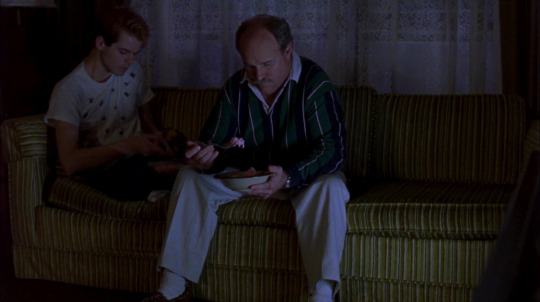
Like the other two films I have seen in Unit 1, the ending of the film is the most striking, lingering part for me. Eric comes out to his mother in the following exchange:
Eric says “I’m gay” \\ in the quietest voice she has, his mother says “I know” Eric and his mother hug* and she asks him“What did I do wrong?” she lets go and moves to the other end of the living room \\ Eric looks devastated says* “I love you” \\ she turns to look at him and says “I don’t know how to handle this”.
In that initial “I’m gay” \\ “I know” exchange be followed by a nice, warm hug, there was a spark of hope in me that this would be a coming out that his parent would handle gracefully (despite the other moments in the film where she starts to suspect and question him). I thought for the briefest of seconds that her question “What did I do wrong?” was her asking Eric how she had misstepped in ways that he was worried about coming out to her. But in about the same amount of time that it took for Eric to process the question, I realized a much deeper, more painful thread was being called to the surface: “What did I do wrong [to make you gay?]”
This feels like an admission a la Mol in 180 Degrees, telling Wang that she is, in fact, disappointed that he is gay. And you can see the way it impacts Eric. And silly me, I should never for a second thought that this coming out might go over flawlessly, because this story and parts of gay culture and gay sex that are included in this film indicate to me there are queer people behind the story. Which means the way that Eric’s mother handles the coming out is so much more likely to be realistic. Parent and child both confirming that they love each other, but their child still being hurt by their parent’s inability to understand and figure out how to handle new information like that spoke directly to how the conversation between me and my mother went when I came out.
But even more important to me than that scene, than the complexity that comes from loving someone and not knowing how to reconcile love and homophobia, is that life goes on. Eric leaves the house, and ends up back at the gay club, surrounded by queer elders, seeing a boy he has a crush on, and smiling and enjoying himself with his community while he listens to his friend sing the words “nothing but blue skies from now on”. Which just feels…idk, so goddamn real? Carrying the pain of rejection with you but being determined to find joy in the people who accept you, despite how much the rejection may hurt.
I place this film in the by, for, about category
In general, I would have given this show an 8.5/10, but with the inclusion of poppers, blow jobs, rimming, use of condoms, and the first fucking inclusion of lube in any gay sex scenes I’ve ever seen on screen, I’m bumping it up to a 9.
Favorite Moment:
The Redi-Whip can spraying in Eric's hand after Rod says something out of pocket.
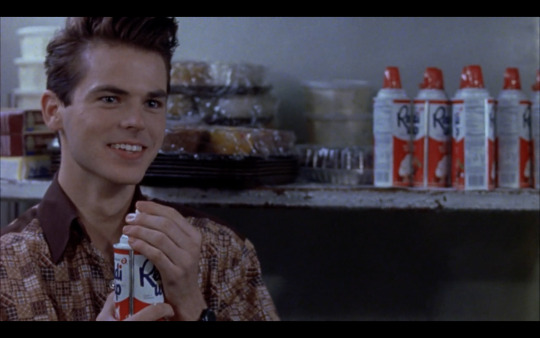
Favorite Quote:
Eric: “I guess I thought if I came out, everything would get easier”
Angie: *immediately bursts out laughing*
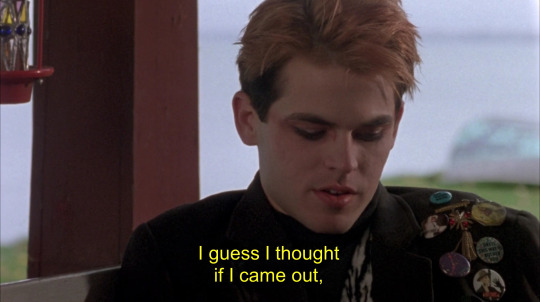
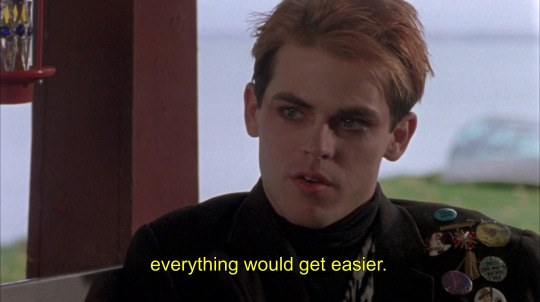
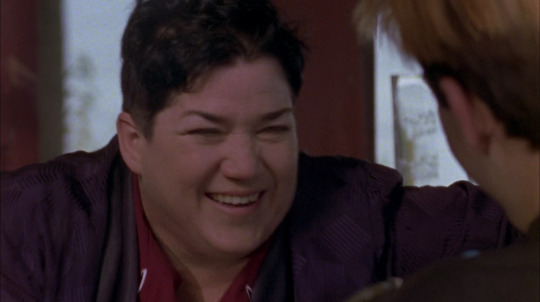
36 notes
·
View notes
Text
The "Disney's Classics" pressings...

There were VHS "releases" of three Disney animated features that are kind of a clustercuss to talk about...
DUMBO, ALICE IN WONDERLAND, and THE SWORD IN THE STONE were titles in the "Classics" line that Walt Disney Home Video used for the company's animated feature library from 1984 to 1994. These three films were unique in that they didn't return to the vault or go on moratorium. They were always, as "Classics" releases, available to purchase at any given time back in the day...
Now, these three titles had already received Classics releases in the mid-1980s. DUMBO in November 1985, followed by SWORD in March 1986, and then ALICE in May 1986. Pictured below were the final issues of those releases, from fall 1987. (They had seen minor packaging updates over the course of a year or so.)
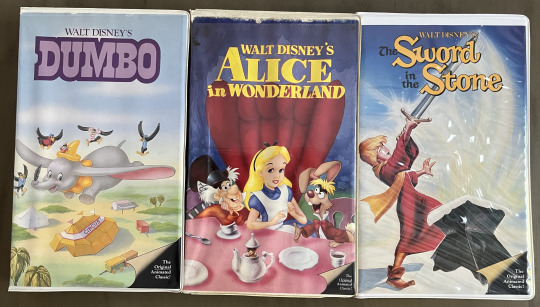
Now you may be wondering... Hey, isn't that the same ALICE cover as the one at the top? It is!
You see, when DUMBO, ALICE, and SWORD received their Classics cover updates in September 1989, to promote the home video debut of BAMBI... Well, wait a minute... ALICE didn't. For whatever reason, Walt Disney Home Video continued to use the 1986/87 cover. Without even updating the heading from "Walt Disney's" to "Walt Disney's CLASSIC", to keep it in line with the other two updated covers...
These are weird "releases" because the only thing new about them - well, DUMBO and SWORD - were the cover artworks. Inside were the 1987 tapes and labels... (I do not have a 1987 SWORD release with a 1987-era label, myself, so it's not pictured below. My copy has a 1986-era label with the "Walt Disney Productions" copyright.)

... and they opened the same way as the '87 tapes, too: Red-orange FBI warnings (or just antipiracy screens if you got them in Canada) and the 1984 flipping text Classics animated intro sequence.
Some time around, I want to say towards the end of 1990... They made updates to the labels for DUMBO and SWORD...
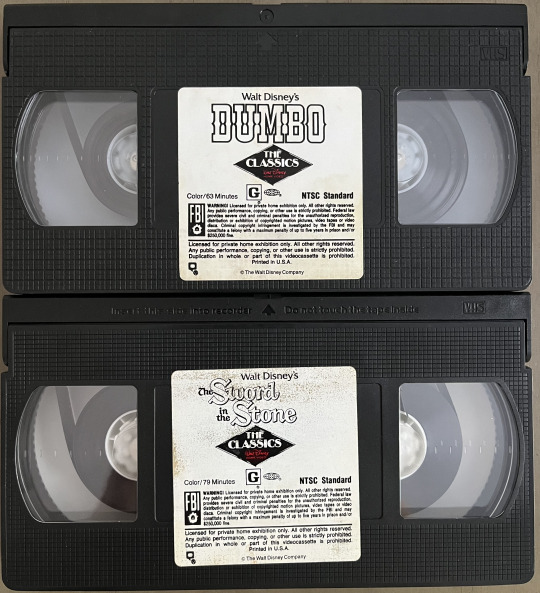
Those new labels reflect the typography seen on the 1989 cover artworks. "Walt Disney's" is in a basic sans-serif font, this typeface also appears on the 1988 video release of CINDERELLA, and the 1989 video release of BAMBI.
They still open the same way, though...
Then, by mid-1991, we finally saw these releases get white-ink labels... Curiously, instead of having the diamond logo that says "THE CLASSICS"/"Walt Disney Home Video", we have a diamond that says "Disney's CLASSICS"... A diamond that appears nowhere else in the history of the Classics lines:
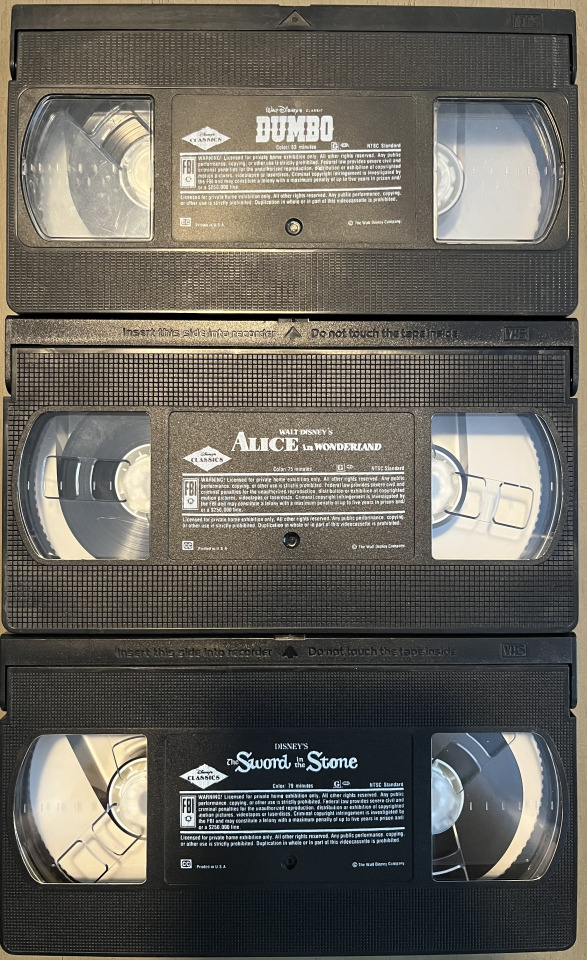
And these contained fully updated prints, too... The tapes now open with the 1989 Walt Disney Classics animated intro sequence, and the film prints used are different. DUMBO and SWORD IN THE STONE have a Buena Vista title card at their respective starts...
Curiously, DUMBO's ink label says "Walt Disney's CLASSIC"... But ALICE and SWORD use the old mid-80s headings...
Lastly, ALICE got a minor case update. The heading was finally changed from "WALT DISNEY'S" to "Walt Disney's CLASSIC" around early 1994...

But for whatever reason, they never gave ALICE a new cover. The LaserDisc release from around this period used a much different rendering of the Mad Tea Party scene. A release I do not have, but am familiar with...

Eventually, these would all be replaced when Disney ended the Classics line and started the Walt Disney Masterpiece Collection. The day the line debuted, in October 1994 with the first-ever home video release of SNOW WHITE AND THE SEVEN DWARFS, these titles were given all new covers, all-new tapes, all-new everything...

DUMBO and SWORD's Masterpiece covers, as you can see, re-use the 1989 Classics covers. ALICE uses the LaserDisc artwork, and an all-new logo for the movie. These would be in print until a later release of sorts. (In DUMBO's case, the 2001 60th Anniversary release. In ALICE's case, a 2nd Masterpiece release in 1999. And in SWORD's case, the 2001 Gold Classic Collection release.)
#disney vhs#disney#disney animation#dumbo#alice in wonderland#sword in the stone#vhs#videocassette#1980s#1990s#80s#90s#fun facts
31 notes
·
View notes